People
Artist Phillip K. Smith III Wants You to Slow Down and Bask in the Meditative Power of Beautiful, Glowing Light
The artist, who recently debuted a new installation in Los Angeles, was celebrated this past weekend by Hennessy Paradis Imperial.
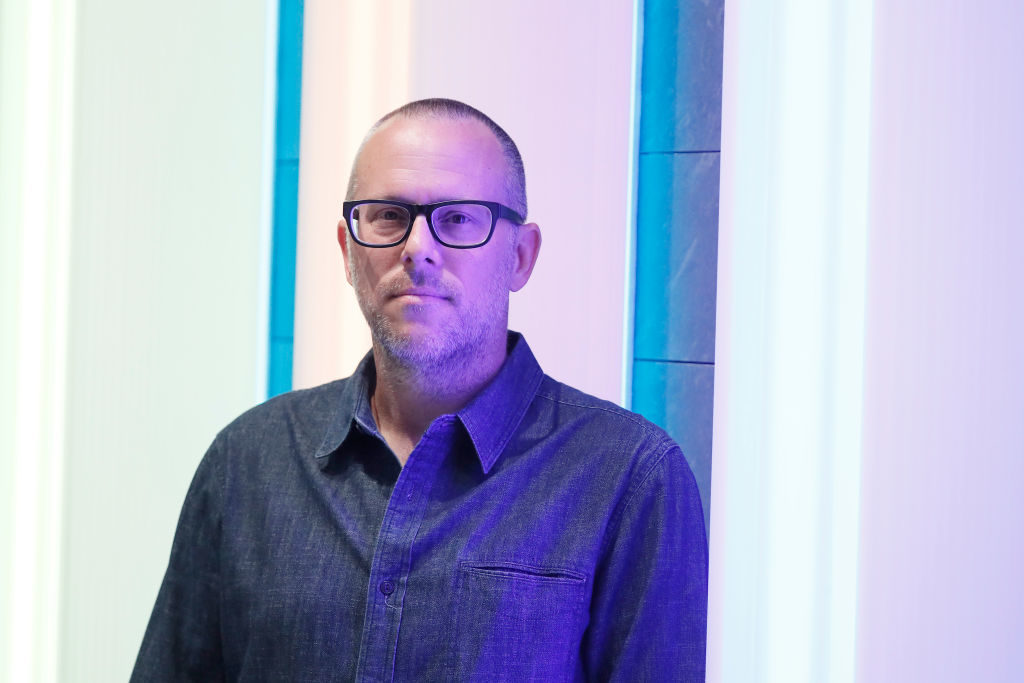
The artist, who recently debuted a new installation in Los Angeles, was celebrated this past weekend by Hennessy Paradis Imperial.

In Partnership with Hennessy Paradis Imperial

The artist Phillip K. Smith III is standing in the middle of his new installation, 10 Columns, at Bridge Projects, a new exhibition space in Hollywood. The gallery is located in an airy, warehouse-type building, the titular 10 columns a part of its architectural structure. Smith’s artworks hug each column, and he calls the LED-and-glass modules that make up each work “volumes.” There are 30 in all, dispersed throughout the space.
The volumes are, in fact, reflective frames blushing with unusually muted colors that are timed to change as the viewer weaves between them. “When we think about lit colors, we have an almost base, primal understanding because the way we look at lit colors is almost entirely through signage,” Smith says. “And it’s usually green, blue, yellow—there’s no burnt umber lit sign, you know? The thought of trying to work with those in-between colors is what I’m really interested in. Because those are palettes that you typically don’t experience, other than in the sky.”
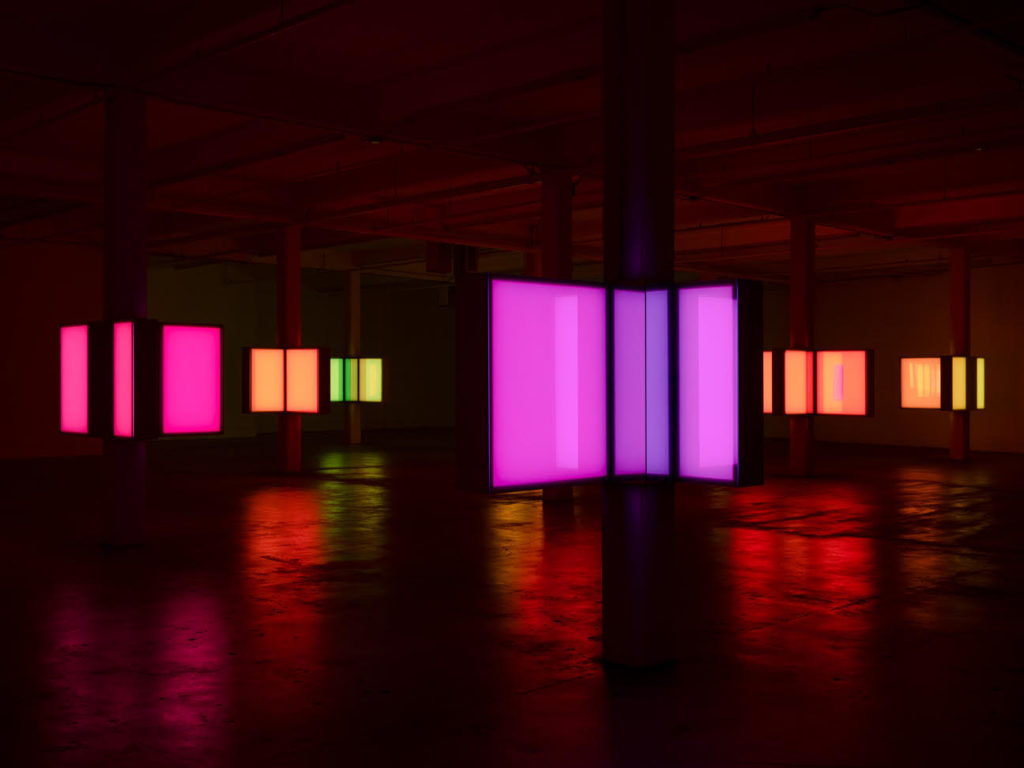
Phillip K. Smith III, 10 Columns (2019). Photo by Lance Gerber.
As is the case with many artists working with light, Smith’s artistic lineage is that of the Light and Space school of artists of the mid-1960s in Southern California, many of whom were inspired by the radiant light of the Los Angeles sun. Smith—whose work was celebrated this past weekend at his studio with a dinner hosted by artnet and Hennessy Paradis Imperial cognac, which also draws subtle but clear inspiration from the Light and Space school—grew up in the High Desert of the Coachella Valley. He studied at the Rhode Island School of Design as both an artist and an architect, but would only later begin to directly incorporate light into his work when he moved back to the desert.
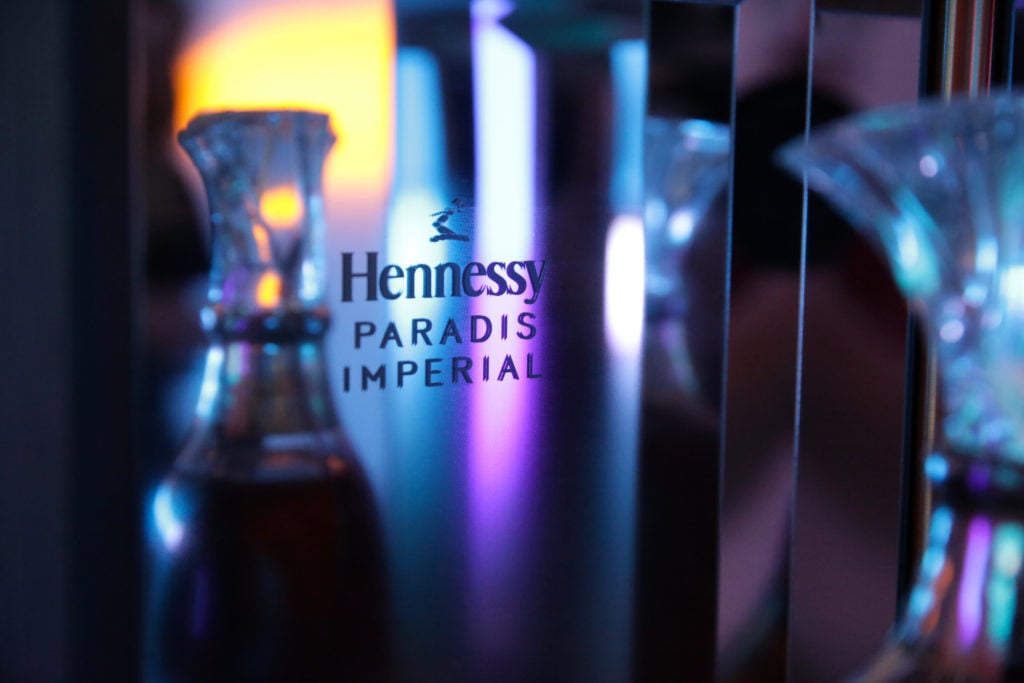
Hennessy Paradis Imperial at Phillip K. Smith’s Palm Desert dinner. Photo courtesy Quinn P. Smith.
“I feel lucky because I have this experience of having lived in the desert and grown up there,” Smith says. “I was trained as part-artist, part-architect, so we had a lot of discussions about the quality of light within a space through an architectural [lens]. But not until moving back to the desert in 2000 did I wake up, in a way, to the beauty that existed there. It took 11 years of being away from it to be able to fully appreciate it.”
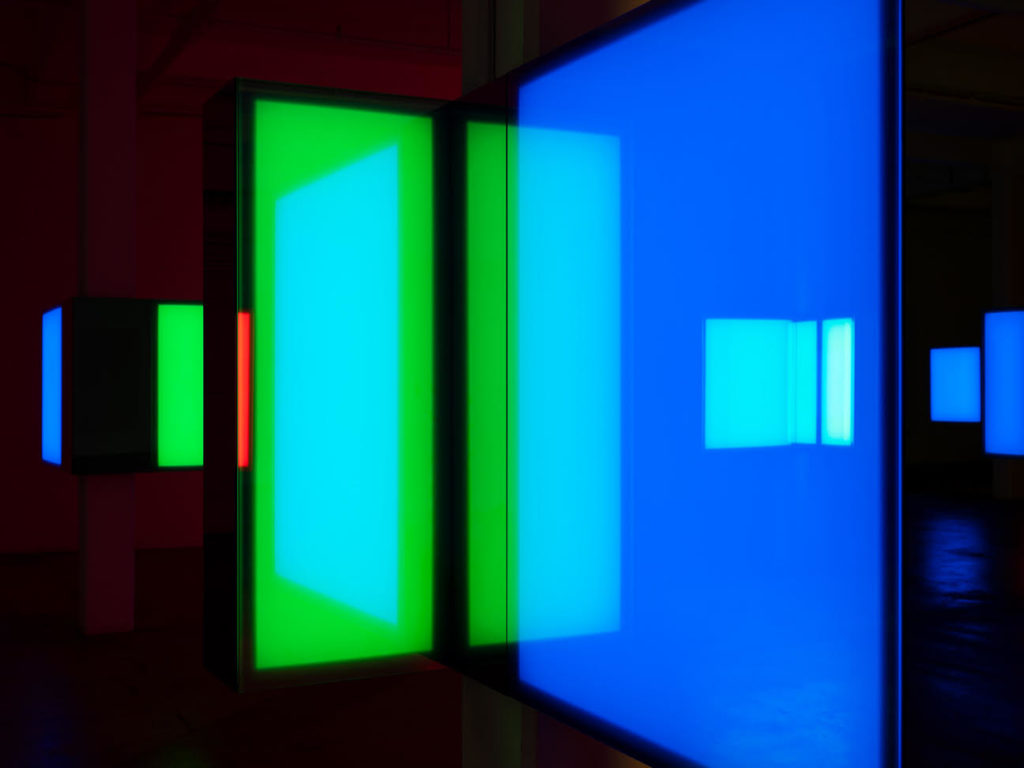
Phillip K. Smith III, 10 Columns (2019). Photo by Lance Gerber.
Much of Smith’s early career took place in the desert, too. His crowdfunded 2003 work Lucid Stead—a desert cabin fitted with mirrors all over the exterior, and LED lights affixed to the windows and door, which appeared to vanish into the landscape during the day, but light up at night—put him on the art world’s radar. The Los Angeles Times wrote that though Lucid Stead only received a few hundred visitors, over 300,000 people went to the project’s website, and images of the cabin went viral.
Paul Clemente, who curates the art at the Coachella Valley Music and Arts Festival, also took notice (it helped that Smith’s studio was in nearby Palm Desert). In 2014 and 2016, Clemente tapped Smith to make works for Coachella, and Smith, who takes pride in working outside traditional art-world structures, welcomed the opportunity. The resulting works, Reflection Fields (2014) and Portals (2016), were ambitious pieces that allowed Smith to work on an enlarged scale. “Where else in the world can you have 250,000 people walk through your work over the course of six days?” Smith says.
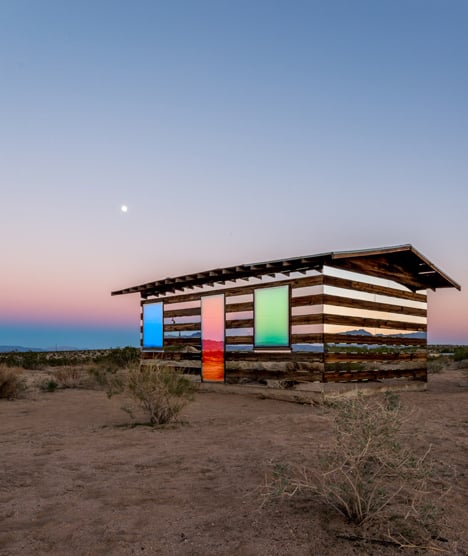
Phillip K. Smith III, Lucid Stead (2003). Photo courtesy Getty Images.
His works continued to grow more ambitious from there. He produced works in Detroit—Skybridge (2018), for which he illuminated a disused pedestrian walkway connecting two buildings in the city’s downtown area—and at the Desert X biennial in Palm Springs.
At his Palm Springs studio this past weekend, Smith debuted a few more of his latest “volume” works during the private dinner in collaboration with Hennessy Paradis Imperial. There, the historic liquor house honored Smith’s work with a tasting of their signature Hennessy Paradis Imperial cognac, a special, rare blend that defies the preconception of older cognac
For a little more than 250 years, eight generations of both the Hennessy founding family and the Filliouxs, the Master Blender family, have meticulously selected, aged and procured their spirits, showcasing their collection’s time-honored history and art of selection. The Hennessy Paradis Imperial is arguably its crown jewel: from every harvest, only 10 out of 10,000 eaux-de-vie are selected for inclusion in the Hennessy Paradis Imperial’s unique and subtly sophisticated blend, underscoring its exceptional, singular nature.

A Hennessy Paradis Imperial decanter designed by Arik Levy in front of Toruses by Phillip K. Smith III. Photo courtesy Quinn P. Smith.
With its shimmering amber color, the sought-after cognac—served from a beautiful, faceted crystal decanter—complemented the glowing hues of Smith’s work perfectly. “We’ve talked about [having a dinner at the studio] for the last couple of years, but this was the first official dinner in the space,” Smith says, noting that he showed his guests two new mirrored light pieces.
His next two projects will be public sculptures in West Hollywood and Bellevue, Washington. Smith cites environmental sculptors Christo and Jeanne-Claude as the inspirations for his interest in creating public works. “It’s in my [architectural] roots, the desire to create a space in which all these people can have their own unique experiences, as well as a shared experience,” he says.
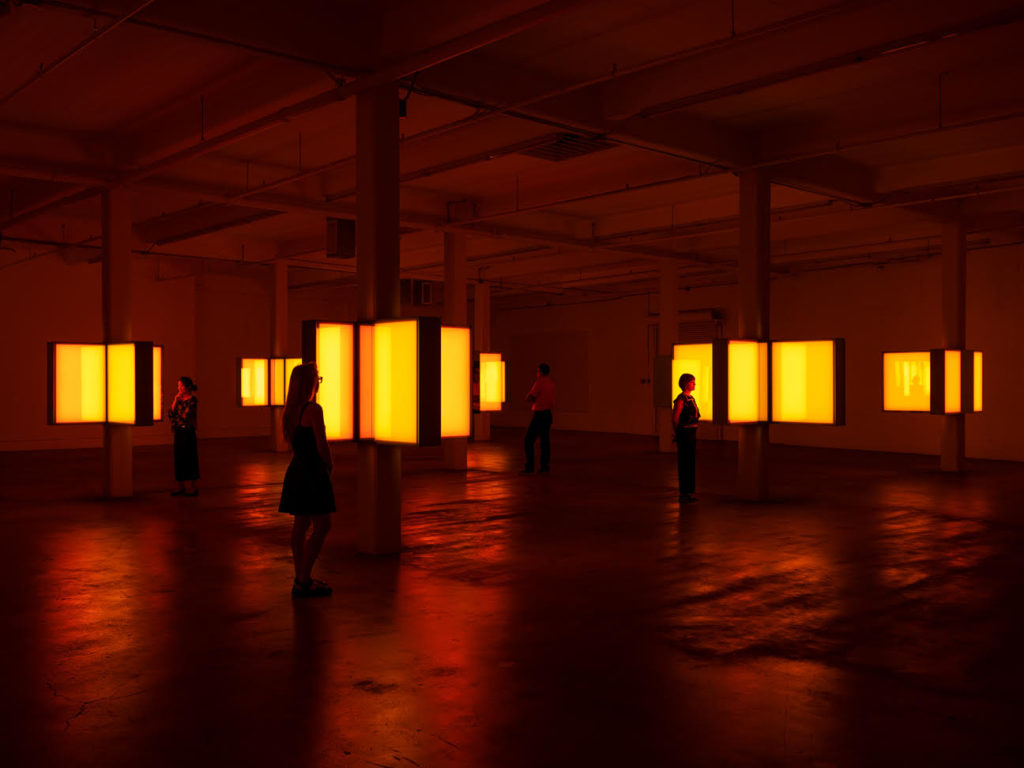
Phillip K. Smith III, 10 Columns (2019). Photo by Lance Gerber.
For now, though, Smith is focused on the Bridge Projects show, about which he becomes visibly excited when mulling over how viewers might take in the art.
“You can step to the side and be away from it, or you can be within it and see your silhouette changing colors through each reflective surface,” he says, walking directly up to the work and peering into it. “You can stand all the way back in the corner to understand the grid logic, but then you can get up close and just get lost in the color. I spent a lot of time doing that when I was up at Lucid Stead.”
For Smith, there’s something meditative about taking a moment to bask in the glowing light of an illuminated space. “I want to create work that connects directly with people, that really grabs them, and pulls them out of their normal state,” he says, “work that allows them to slow down and really look and experience the thing that’s in front of them, which quite often we don’t have the opportunity to do in our everyday lives.”